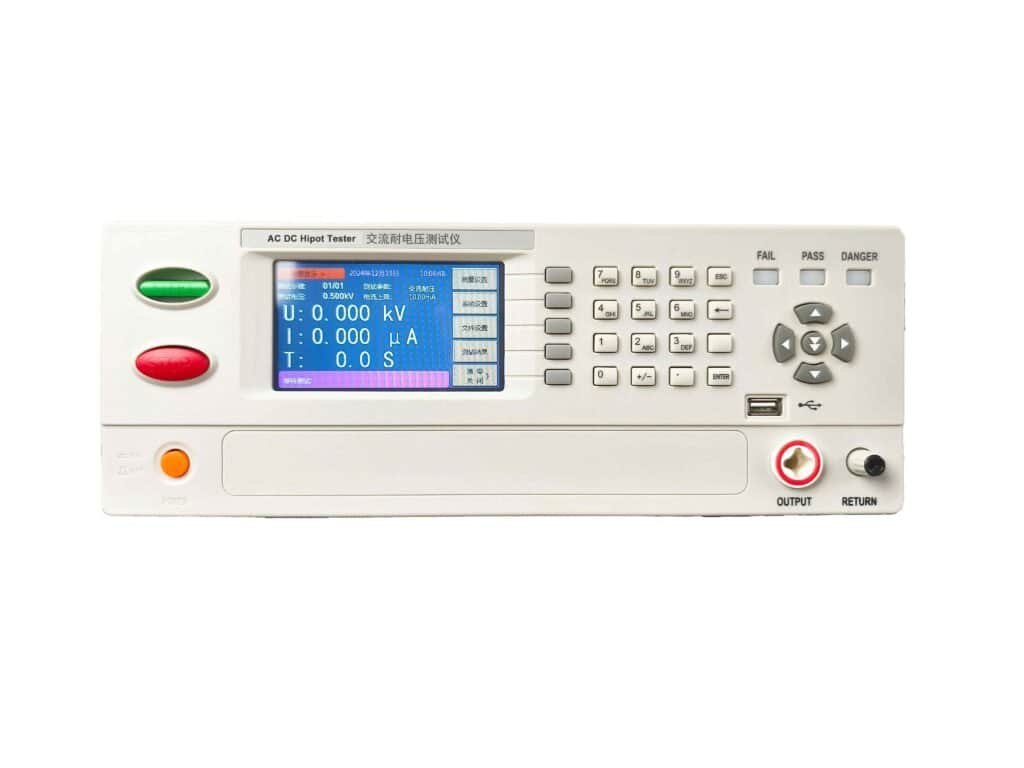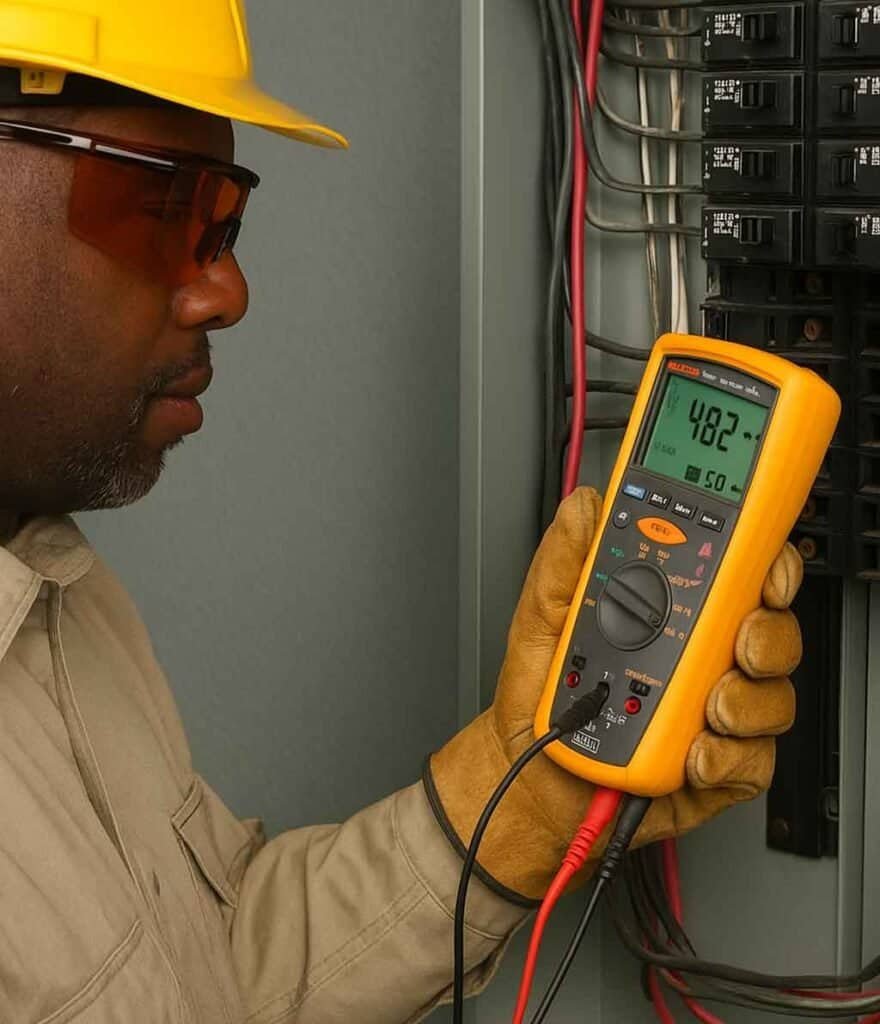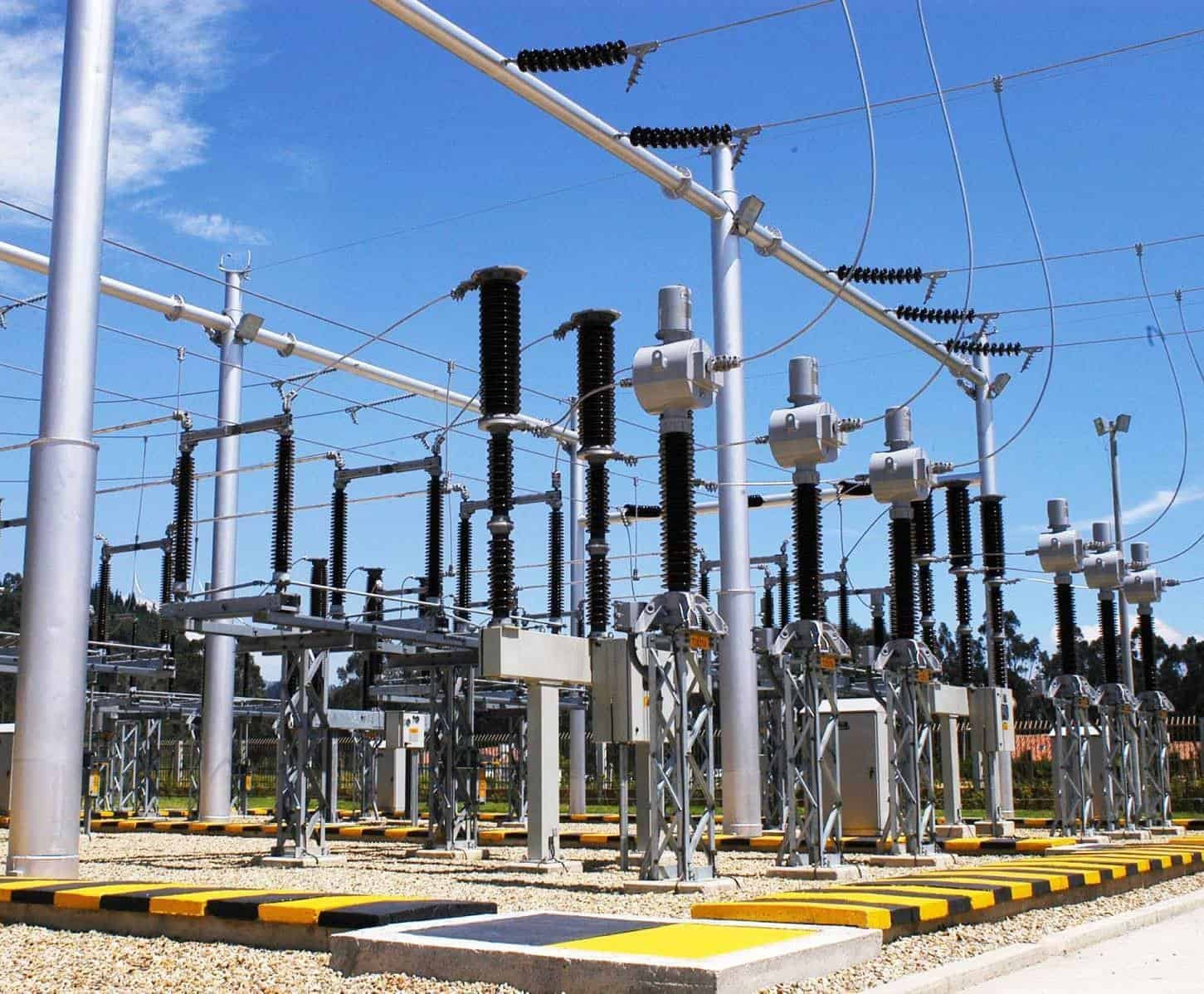Worried about hidden electrical insulation defects? Ignoring them can lead to sudden equipment failure, creating serious safety risks and expensive operational shutdowns. A proper test is your best line of defense.
Dielectric tests, commonly called Hipot (High Potential) tests, are electrical safety tests that verify an insulation’s ability to withstand high voltages. By applying a voltage much higher than normal, the test ensures the insulation has no critical defects that could lead to failure.

That’s the simple answer, but the real value is in knowing why this test is different from others and what its results truly mean for your equipment’s safety.
This guide will walk you through the key concepts, clear up common confusion with other tests, and explain why it is an essential procedure for anyone responsible for high-voltage equipment. Understanding the purpose of a dielectric test is the first step toward building a reliable electrical maintenance and safety program. It’s not just about passing a test; it’s about preventing catastrophic failures before they happen. Let’s explore the details that matter to engineers and technicians in the field.
What does a high dielectric mean?
Misinterpreting test results can be dangerous. A “high” value might not mean what you think, leading to false confidence in your equipment and overlooking potential risks. A “high dielectric” usually refers to a material with a high dielectric strength. This means the material is an excellent electrical insulator, able to withstand a very high voltage before it breaks down and allows current to pass through. It is a key characteristic of robust insulation.
I often clarify that “high dielectric” is about strength, not just a measurement number. The dielectric strength of a material is the maximum electric field it can handle without failing. This property is crucial for everything from the oil in a transformer to the polymer jacket on a high-voltage cable. For example, air breaks down at about 3 kV/mm, while transformer oil can withstand over 20 kV/mm.

A successful dielectric test proves that the finished product—your cable, motor, or switchgear—maintains the required insulation integrity and doesn’t have defects like cracks, pinholes, or improper clearances that would reduce its dielectric strength.
Dielectric Strength of Common Insulators
The inherent properties of materials determine their suitability for high-voltage applications.
| Material | Typical Dielectric Strength (kV/mm) | Common Application |
|---|---|---|
| Air | ~3 | Insulation clearance in open-air switchgear. |
| Transformer Oil | 15 – 25 | Cooling and insulation in transformers and circuit breakers. |
| Porcelain | 12 – 20 | High-voltage insulators on transmission lines. |
| Mica | 40 – 120 | Insulation in high-temperature applications like capacitors and motors. |
| XLPE (Cross-linked Polyethylene) | 20 – 40 | Insulation for medium and high-voltage power cables. |
Source: Data compiled from various engineering handbooks, such as the “Standard Handbook for Electrical Engineers.”
What is the difference between dielectric test and insulation test?
People often use these terms as if they mean the same thing. This common confusion can lead to performing the wrong procedure, potentially missing critical signs of equipment degradation. A dielectric test (Hipot) is a stress test to check insulation strength with a simple pass/fail result.
An insulation resistance test (often called a Megger test) is a measurement test that determines insulation quality by providing a resistance value in ohms. Think of it this way: an insulation resistance test is like a routine blood pressure check. It gives you a number (e.g., 2 Gigaohms) that tells you about the general health of the insulation. A downward trend over time might indicate a problem like moisture ingress.

A dielectric test, however, is like a cardiac stress test. It intentionally pushes the system to a specified limit to see if it holds up under pressure. It doesn’t give you a health score; it just answers one critical question: “Is this insulation strong enough to do its job safely?” For a complete picture of your equipment’s condition, you often need both.
Head-to-Head: Megger vs. Hipot
This table breaks down the key differences to help you decide which test you need.
| Feature | Megger (Insulation Resistance Tester) | Hipot (Dielectric Strength Tester) |
|---|---|---|
| Primary Goal | Diagnostic: To assess the condition and degradation of insulation over time. | Safety Compliance: To ensure the equipment can safely contain its operating voltage. |
| Test Type | A measurement test. | A stress test. |
| Voltage Level | 500V to 10kV DC (high, but not intentionally destructive). | 1kV to over 100kV AC or DC (intentionally high to find weak points). |
| Test Duration | Typically 1 to 10 minutes (for Polarization Index). | Usually 60 seconds (as per most safety standards). |
| Result | A quantitative value (e.g., 2,000 MΩ). | A qualitative result (Pass or Fail). |
| Primary Application | Preventive and predictive maintenance, troubleshooting. | Production line quality control, commissioning after installation or repair. |
Is dielectric testing destructive?
The fear of damaging expensive equipment makes many technicians hesitant to perform necessary safety tests. This leaves hidden weaknesses undiscovered until a catastrophic failure occurs during operation. Dielectric testing is considered non-destructive for equipment with good, healthy insulation.
However, it is designed to be destructive to components with faulty or weak insulation. The test’s purpose is to find a pre-existing defect by causing it to fail in a controlled environment. I always reassure my clients at KVIPOT that a properly conducted Hipot test does not harm healthy equipment. The test voltage is carefully chosen based on international standards (like IEC 60950).
This voltage is significantly higher than the normal operating voltage but still well below the breakdown voltage of new, defect-free insulation. If the product’s insulation is good, it will easily withstand the test voltage and return to its original state once the voltage is removed. If it fails, the test simply revealed a hidden weakness—like a pinhole, crack, or insufficient clearance—that would have eventually caused a failure in the field, likely with far more dangerous and costly consequences.
Test Types and Their Impact
Not all high-voltage tests are the same. Understanding their intent is key.
| Test Type | Purpose | Impact on DUT |
|---|---|---|
| Insulation Resistance | Measures insulation quality. | Non-destructive. |
| Dielectric Withstand (Hipot) | Confirms insulation strength meets a minimum level. | Non-destructive to good insulation; destructive to faulty insulation. |
| Proof Test | A type of Hipot test performed in the field to verify service-aged insulation. | Non-destructive to serviceable insulation. |
| Breakdown Test | Intentionally raises voltage until insulation fails. | Always destructive. Used in labs and for quality control, not field maintenance. |
Is a Megger a dielectric test?
Confusing these two critical tools is a common and costly mistake. You might believe you’ve performed a comprehensive safety check when you have, in fact, only completed a general health assessment. No, a Megger does not perform a dielectric test.
A Megger is a brand name that has become synonymous with the insulation resistance test, which measures the quality of insulation in ohms. A dielectric test, or Hipot test, checks the insulation’s strength by applying a much higher voltage. This distinction is vital. I once worked with a client who was meticulously performing Megger tests on repaired motors. The resistance readings were excellent, but a motor still failed shortly after being returned to service. The issue was a small manufacturing flaw where a winding was too close to the motor’s housing.
The insulation material itself was high quality (giving a good Megger reading), but the insufficient clearance created a weak point. A proper dielectric withstand test would have immediately caused an arc across that small gap, revealing the defect before it left the repair shop. This shows that the two tests check for different types of problems.
When to Use Each Test
Choosing the correct instrument is essential for effective maintenance and safety.
| Scenario | Recommended Primary Test | Rationale |
|---|---|---|
| New Cable Commissioning | Dielectric Test (Hipot/VLF) | To prove the insulation is strong and was not damaged during installation. |
| Annual Transformer Maintenance | Insulation Resistance Test (Megger) | To track the health of the insulation over time and detect slow degradation from moisture or aging. |
| Production Line QA/QC | Dielectric Test (Hipot) | To verify every unit meets the required safety standards before shipping. |
| Troubleshooting a Tripping Breaker | Both Tests | First, use a Megger to check for low resistance (a clear fault). If okay, a Hipot test can find weaknesses that only appear under voltage stress. |
What is another name for a dielectric test?
Different standards, regions, and engineers often use different terminology. This industry jargon can be confusing, making it difficult to understand a technical document or order the correct equipment. The most common alternative name for a dielectric test is a Hipot test, which is short for High Potential test. It is also formally called a dielectric withstand test or, more simply, an insulation strength test. All these terms describe the same fundamental safety test.
At KV Hipot , we serve a global market, so we have to be fluent in all these terms. “Hipot test” is very common in manufacturing and throughout North America. It’s short and widely understood by technicians. “Dielectric withstand test” is the formal language you will find in international standards from bodies like the IEC. It precisely describes the test’s purpose: to see if the insulation can withstand the voltage.
“Insulation strength test” is a more descriptive term that clearly communicates the goal without using jargon. Knowing these variations ensures that no matter who you are talking to, you are all on the same page about this critical safety procedure.
Demystifying the Terminology
Understanding the different names and their contexts can improve communication.
| Term | Origin & Meaning | Common Context of Use |
|---|---|---|
| Dielectric Test | A formal, technical name based on “dielectric,” an insulating material. | Broadly used in engineering and technical specifications. |
| Hipot Test | A portmanteau of “High Potential.” | Industry slang, very common in manufacturing and North American standards. |
| Dielectric Withstand Test | Emphasizes the pass condition—the insulation withstands the voltage. | The preferred term in many international standards (e.g., IEC, IEEE). |
| Insulation Strength Test | A simple, descriptive term focusing on the physical property being tested. | Used in training and documentation for clarity. |
Conclusion
Dielectric tests, or Hipot tests, are essential for verifying insulation strength. They differ from insulation resistance tests and are a non-destructive way to confirm electrical equipment safety and prevent unexpected failures.




